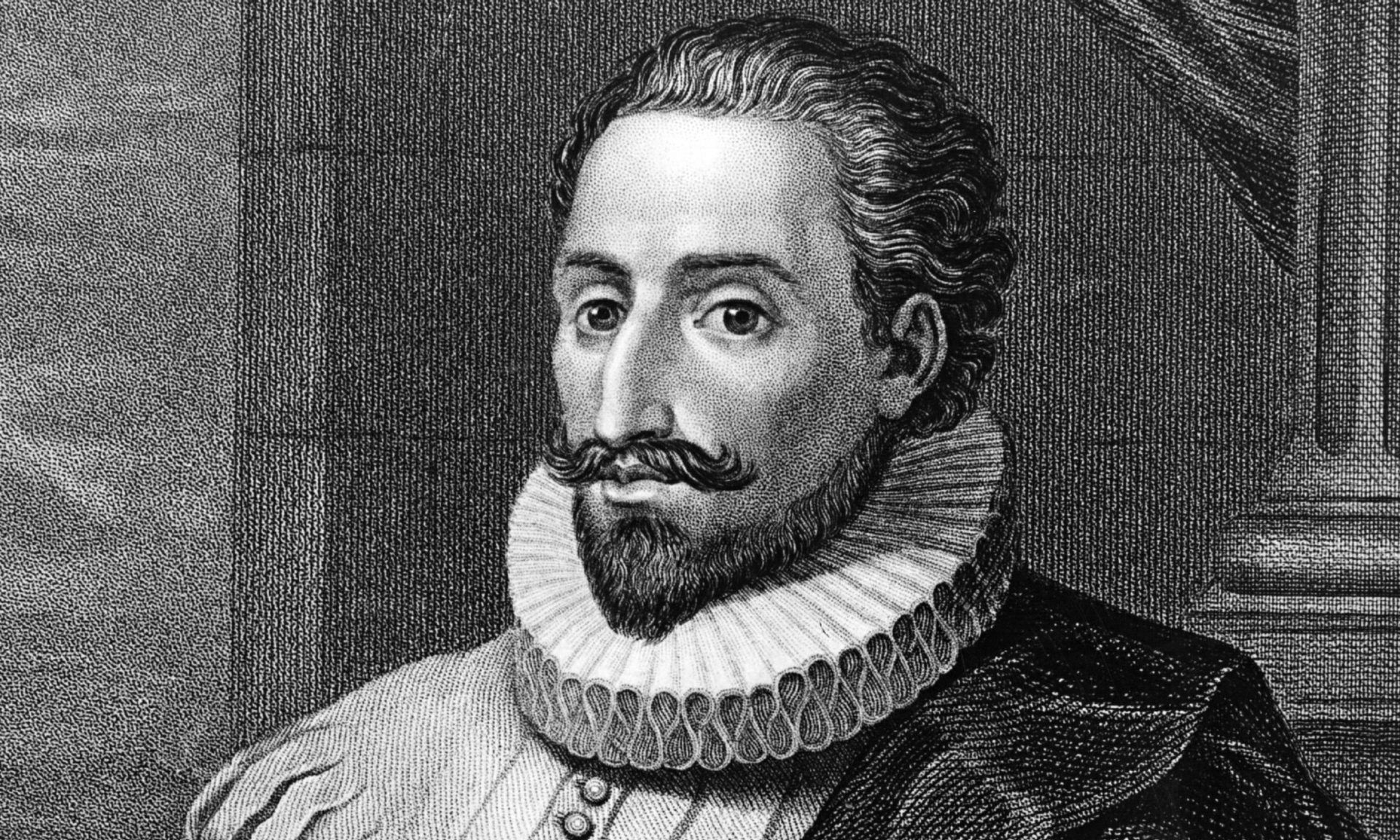On the fourth centenary of his death in 1616, myths and facts still intertwine along the ambiguous life of Miguel de Cervantes, considered a pioneer of the modern novel in European literature.
The celebrated author of Don Quixote of La Mancha (originally Don Quijote de la Mancha in present-day Spanish) has been also linked to one of Istanbul’s mosques, Kılıç Ali Paşa Mosque, situated in the Tophane district. The Turkish researcher Rasih Nuri İleri (1920-2014) claimed to have found the name of Cervantes among the slaves that worked in the construction of the mosque from 1578 to 1580, under the orders of Mimar Sinan, the great architect of the period[1]. This theory, never supported by any academic publication, was later spread by several Turkish media sources[2][3].
However, Cervantes’ biography provides illuminating information to help answer the question whether this claim is a historical fact or hearsay. Miguel de Cervantes (1547-1616) was born in Alcalá de Henares, a city in the province of Madrid. Ever since he was very young, he showed a particular interest in the literary and theatre world and at the age of 23, he moved to Italy in order to master the classical arts. However, in 1571 he decided to join the Spanish fleet at the battle of Lepanto, a major clash between the Catholic states and the Ottomans for the control of the Mediterranean. Following this, Cervantes pursued his military career, but it was cut short when he was captured by Ottoman pirates and taken to Algiers, which had become one of the main and most cosmopolitan cities of the Ottoman Empire, and was kept here in captivity between the years of 1575 and 1580.

At this point, Cervantes may have crossed paths with the Ottoman admiral Kılıç Ali Paşa, former governor of Algiers and chief Admiral in those days, referred to Cervantes’ works as Occhiali. Could Kılıç Ali Paşa have sent Cervantes to Istanbul to join the works of his personal mosque? The majority of Spanish and European academics who have studied the figure of Cervantes conclude the unlikelihood of this[4]. Notwithstanding disagreement in the critical works of Cervantes, there are some interesting details in Don Quixote that could offer a different interpretation.

In Chapter XXXV, Cervantes narrates the life of a Spanish soldier, Rui Pérez de Viedma, captured in Lepanto and taken as a prisoner to Constantinople. However, it is a tale full of fictional details and chronological confusion. In addition, in his work The Great Sultana, the author describes the life at the Ottoman court and the city of Istanbul and even mentions the parks of Beşiktaş. For Professor Daniel Eisenberg, the captivity years in Cervantes’ life are indeed a period full of vagueness[5].
Nevertheless, Cervantes himself confirmed that he spent more than five years in captivity in Algiers, where he “learned how to face adversity with patience”[6]. Also, some of his fellow prisoners have confirmed this account[7]. Therefore, Cervantes could not apparently participate in the works of Kılıç Paşa Mosque by 1579-1580. As a matter of fact, during the end of construction of the temple, Cervantes was being released by some Trinitarian monks who paid his ransom in Algiers and took him back to Spain.

So, how can we explain the references about Istanbul in his works? Many specialists in Cervantes claim that, like many European writers of his time, he learnt about the exotic Istanbul through tales of sailors, merchants and ambassadors. Actually, Cervantes had access to all sorts of information coming from the Ottoman capital during his captivity in Algiers[8].
Lastly, I would like to bring up the opinion of Dr Emilio Sola, who has studied the Ottoman image in Cervantes’ works for many years[8]. During the conference entitled “Cervantes, Spain and Turkey” that took place in the Cervantes Institute last May which I was lucky to join, an audience member asked Professor E. Sola the same question that provides a title to this very article. E. Sola answered in a simple fashion that if Cervantes had been to Istanbul, taking into account his obsession for authentic descriptions, he would have made the most detailed and breathtaking portrait ever written, yet it is not the case as most of Cervantes’ depiction of Istanbul relies on quite well-known realities.
Thus, if there is no further academic or archaeological proof getting published, with the currently available studies we are far from stating that one of the main authors in world literature ever visited our beloved city.

p.s. I’d like to thank my dear Sarah Beekhan for helping with my otherwise too Cervantist English.
[1] EREN, Güleren, “The Heritage of A Sailor”, Beyoğlu, June 2006, no. 3, pp. 59–64.
[2] TÜRKMENOĞLU, Fatih, “Cervantes İstanbul’da esirdi” en Milliyet.com.tr
[3] ŞİMŞEK, M. S., “Cervantes Kılıç Ali Paşa Camii’nde amele idi” en Yenisafak.com
[4] Canavaggio, Cervantes, Espasa. Barcelona: 2015, pp. 103-126
[5] EISENBERG, Daniel, “¿Por qué volvió Cervantes de Argel?”, Ingeniosa invención: Essays on Golden Age Spanish Literature for Geoffrey L. Stagg in Honor of his Eighty-Fifth Birthday. Ed. Ellen Anderson y Amy Williamsen. Newark, Delaware: Juan de la Cuesta, 1999. 241–53.
[6] CERVANTES, Miguel de., “Prólogo al lector”, Novelas ejemplares. Madrid, 1613.
[7] AVALLE-ARCE, Juan Bautista, «La captura (Cervantes y la autobiografía)», en Nuevos deslindes cervantinos, Barcelona: Ariel, 1975 (1968), pp. 279-333.
[8] GARCÍA LORENZO, Luciano, Cervantes, Constantinopla y la Gran Sultana. CSIC, 1993.
[9] SOLA, Emilio, Cervantes y Turquía, Universidad de Alcalá, 2013.

Wow, I have never heard about any of this! Interesting article.
This is the best article I’ve ever read about Cervantes. Ever. Thank you, Diego Bey. How can I ever repay you?